Searching for "internet"
Center for Digital Education (CDE)
real-time impact on curriculum structure, instruction delivery and student learning, permitting change and improvement. It can also provide insight into important trends that affect present and future resource needs.
Big Data: Traditionally described as high-volume, high-velocity and high-variety information.
Learning or Data Analytics: The measurement, collection, analysis and reporting of data about learners and their contexts, for purposes of understanding and optimizing learning and the environments in which it occurs.
Educational Data Mining: The techniques, tools and research designed for automatically extracting meaning from large repositories of data generated by or related to people’s learning activities in educational settings.
Predictive Analytics: Algorithms that help analysts predict behavior or events based on data.
Predictive Modeling: The process of creating, testing and validating a model to best predict the probability of an outcome.
Data analytics, or the measurement, collection, analysis and reporting of data, is driving decisionmaking in many institutions. However, because of the unique nature of each district’s or college’s data needs, many are building their own solutions.
For example, in 2014 the nonprofit company inBloom, Inc., backed by $100 million from the Gates Foundation and the Carnegie Foundation for the Advancement of Teaching, closed its doors amid controversy regarding its plan to store, clean and aggregate a range of student information for states and districts and then make the data available to district-approved third parties to develop tools and dashboards so the data could be used by classroom educators.22
Tips for Student Data Privacy
Know the Laws and Regulations
There are many regulations on the books intended to protect student privacy and safety: the Family Educational Rights and Privacy Act (FERPA), the Protection of Pupil Rights Amendment (PPRA), the Children’s Internet Protection Act (CIPA), the Children’s Online Privacy Protection Act (COPPA) and the Health Insurance Portability and Accountability Act (HIPAA)
— as well as state, district and community laws. Because technology changes so rapidly, it is unlikely laws and regulations will keep pace with new data protection needs. Establish a committee to ascertain your institution’s level of understanding of and compliance with these laws, along with additional safeguard measures.
Make a Checklist Your institution’s privacy policies should cover security, user safety, communications, social media, access, identification rules, and intrusion detection and prevention.
Include Experts
To nail down compliance and stave off liability issues, consider tapping those who protect privacy for a living, such as your school attorney, IT professionals and security assessment vendors. Let them review your campus or district technologies as well as devices brought to campus by students, staff and instructors. Finally, a review of your privacy and security policies, terms of use and contract language is a good idea.
Communicate, Communicate, Communicate
Students, staff, faculty and parents all need to know their rights and responsibilities regarding data privacy. Convey your technology plans, policies and requirements and then assess and re-communicate those throughout each year.
“Anything-as-a-Service” or “X-as-a-Service” solutions can help K-12 and higher education institutions cope with big data by offering storage, analytics capabilities and more. These include:
• Infrastructure-as-a-Service (IaaS): Providers offer cloud-based storage, similar to a campus storage area network (SAN)
• Platform-as-a-Service (PaaS): Opens up application platforms — as opposed to the applications themselves — so others can build their own applications
using underlying operating systems, data models and databases; pre-built application components and interfaces
• Software-as-a-Service (SaaS): The hosting of applications in the cloud
• Big-Data-as-a-Service (BDaaS): Mix all the above together, upscale the amount of data involved by an enormous amount and you’ve got BDaaS
Suggestions:
Use accurate data correctly
Define goals and develop metrics
Eliminate silos, integrate data
Remember, intelligence is the goal
Maintain a robust, supportive enterprise infrastructure.
Prioritize student privacy
Develop bullet-proof data governance guidelines
Create a culture of collaboration and sharing, not compliance.
more on big data in this IMS blog:
https://blog.stcloudstate.edu/ims/?s=big+data&submit=Search
Social Media Update 2014
http://www.pewinternet.org/2015/01/09/social-media-update-2014/

The 13 Most Popular Social Networks (By Age Group)
http://www.adweek.com/socialtimes/popular-social-networks-age/502497

Top 15 Most Popular Social Networking Sites | October 2015
http://www.ebizmba.com/articles/social-networking-websites
more in this blog on social media usage:
https://blog.stcloudstate.edu/ims/2014/10/13/social-media-statistics-australia/
5 Disruptive Tech Trends That Could Dominate in 2016
http://www.fool.com/investing/general/2015/09/26/5-disruptive-tech-trends-that-could-dominate-in-20.aspx
Andres Cardenal (IoT). The Internet of Things
Tim Brugger (Big Data): In part because the world around us is becoming “connected” through a growing number of IoT sensors, mobile devices, and the world’s affinity for the Internet, the sheer volume of information available is already staggering.
Daniel B. Kline (endless payment): While subscriptions have always been a factor on the enterprise side of the software business, they’re now moving into the consumer end of things. The leader has been Microsoft (NASDAQ:MSFT), which has managed to move a large part of its Office customer base into a subscription model.
Tim Green (budget smartphones): Zenfone 2 from Asus and the Moto G from Motorola.
Does social media make room for critical thinking?

social media critical thinking
Sinprakob, S., & Songkram, N. (2015). A Proposed Model of Problem-based Learning on Social Media in Cooperation with Searching Technique to Enhance Critical Thinking of Undergraduate Students. Procedia – Social And Behavioral Sciences, 174(International Conference on New Horizons in Education, INTE 2014, 25-27 June 2014, Paris, France), 2027-2030. doi:10.1016/j.sbspro.2015.01.871
http://login.libproxy.stcloudstate.edu/login?qurl=http%3a%2f%2fsearch.ebscohost.com%2flogin.aspx%3fdirect%3dtrue%26db%3dedselp%26AN%3dS1877042815009234%26site%3deds-live%26scope%3dsite
Bailey, A. (2014). Teaching Alice Walker’s The Color Purple: Using Technology and Social Media To Foster Critical Thinking and Reflection. Virginia English Journal, 64(1), 17.
http://login.libproxy.stcloudstate.edu/login?qurl=http%3a%2f%2fsearch.ebscohost.com%2flogin.aspx%3fdirect%3dtrue%26db%3dedo%26AN%3d98060385%26site%3deds-live%26scope%3dsite
Eales-Reynolds, L., Gillham, D., Grech, C., Clarke, C., & Cornell, J. (2012). A study of the development of critical thinking skills using an innovative web 2.0 tool. Nurse Education Today, 32(7), 752-756. doi:10.1016/j.nedt.2012.05.017
Baldino, S. (2014). The Classroom Blog: Enhancing Critical Thinking, Substantive Discussion, and Appropriate Online Interaction. Voices From The Middle, 22(2), 29.
http://login.libproxy.stcloudstate.edu/login?qurl=http%3a%2f%2fsearch.ebscohost.com%2flogin.aspx%3fdirect%3dtrue%26db%3dedo%26AN%3d99913218%26site%3deds-live%26scope%3dsite
Ravenscroft, A., Warburton, S., Hatzipanagos, S., & Conole, G. (2012). Designing and evaluating social media for learning: shaping social networking into social learning?. Journal Of Computer Assisted Learning, 28(3), 177-182. doi:10.1111/j.1365-2729.2012.00484.x
http://login.libproxy.stcloudstate.edu/login?qurl=http%3a%2f%2fsearch.ebscohost.com%2flogin.aspx%3fdirect%3dtrue%26db%3dkeh%26AN%3d75254126%26site%3deds-live%26scope%3dsite
finding ways to capture meaningful informal learning experiences by explicitly linking these to formal structures, and providing frameworks within which informal learning can then be validated and accredited (Cedefop Report 2007).
Education is clearly a social process but it is probably much closer to an ongoing discussion or debate than an extended celebration with an ever-expanding network of friends (p. 179, Ravenscroft et al.)
the community of inquiry (COI) model developed by Garrison and Anderson (2003) and social network analysis (SNA). European Commission-funded integrated
project called MATURE (Continuous Social Learning in Knowledge Networks), which is investigating how technology-mediated informal learning leads to improved knowledge practices in the digital workplace
Key to using social media is the ability to stand back and evaluate the credibility of a source of information, apart from the actual content. While developing this critical attitude toward traditional media is important, the attitude is even more crucial in the context of using social media because information didn’t go through the vetting process of formal publication. Can the student corroborate the information from multiple sources? How recent is this information? Are the author’s credentials appropriate? In other words, the ability to step back, to become aware of the metatext or metacontext is more important than ever.
Coad, D. T. (2013). Developing Critical Literacy and Critical Thinking through Facebook. Kairos: A Journal Of Rhetoric, Technology, And Pedagogy, 18(1).
Many instructors believe that writing on social networking sites undermines the rhetorical skills students learn in class because of the slang and abbreviations often used on these sites; such instructors may believe that social networks are the end of students’ critical awareness when they communicate. Johndan Johnson-Eilola and Stuart A. Selber (2009) contended that electronic writing forms actually require “sophisticated skills of understanding concrete rhetorical situations, analyzing audiences (and their goals and inclinations), and constructing concise, information-laden texts, as a part of a dynamic, unfolding, social process” (p. 18). It is this dynamic process that makes social networking a perfect match for the composition classroom and for teaching rhetorical skills: It helps students see how communication works in real, live rhetorical situations. Many students do not believe that communication in these media requires any kind of valuable literacy skills because they buy into the myth of how the news media portray social networks as valueless forms of communication that are decaying young people’s minds. This is why I introduced students to the passage from Invisible Man: to get them thinking about what kinds of skills they learn on Facebook. I found the text useful for helping them acknowledge the skills they are building in these writing spaces.
Stuart A. Selber (2004) in Multiliteracies for a Digital Age criticized so-called computer literacy classes for having “focused primarily on data representations, numbering systems, operating systems, file formats, and hardware and software components” rather than on the task of teaching students to be “informed questioners of technology” (p. 74). In a time when, as Sheelah M. Sweeny (2010) noted, “the ability to stay connected with others is constant,” it is increasingly important to engage composition students in critical thinking about the spaces they write in (p. 121). It is becoming clearer, as technology giants such as Google® and Apple® introduce new technologies, that critical literacy and critical thinking about technology are necessary for our students’ futures.
Valentini, C. (2015). Is using social media “good” for the public relations profession? A critical reflection. Public Relations Review, 41(2), 170-177. doi:10.1016/j.pubrev.2014.11.009
p. 172 there is no doubt that digital technologies and social media have contributed to a major alteration in people’s interpersonal communications and relational practices. Inter- personal communications have substantially altered, at least in Western and developed countries, as a result of the culture of increased connectivity that has emerged from social media’s engineering sociality ( van Dijck, 2013 ), which allows anyone to be online and to connect to others. Physical presence is no longer a precondition for interpersonal communication.
(Jiping) The Pew Research Center ( Smith & Duggan, 2013 , October 21) indicates that one in every ten American adults has used an online dating site or mobile dating app to seek a partner, and that in the last eight years the proportion of Americans who say that they met their current partner online has doubled. Another study conducted by the same organization ( Lenhart & Duggan, 2014 , February 11) shows that 25% of married or partnered adults who text, have texted their partner while they were both home together, that 21% of cell-phone owners or internet users in a committed relationship have felt closer to their spouse or partner because of exchanges they had online or via text message. Another 9% of adults have resolved online or by text message an argument with their partner that they were having difficulty resolving person to person ( Lenhart & Duggan, 2014 , February 11). These results indicate that digital technologies are not simply tools that facilitate communications: they have a substantial impact on the way humans interact and relate to one another. In other words, they affect the dynamics of interpersonal relations
Survey: Most Students Prefer Traditional Texts over E-Books
http://campustechnology.com/articles/2015/09/01/survey-most-students-prefer-traditional-texts-over-ebooks.aspx
Reasons commonly cited by students for preferring traditional books include:
- They are easier to read;
- Students like to physically highlight selections;
- They’re cheaper;
- Students prefer the formatting;
- They’re easier to navigate and bookmark;
- E-books make students’ eyes hurt;
- Students find it harder to concentrate on e-books;
- Traditional books do not require Internet access;
- Students like to write on the pages;
- Tablets or laptops are not allowed in class;
- Availability of e-books is limited; and
- Students end up printing the pages of e-books anyway.
Among the 27 percent of respondents who do prefer e-books, common reasons for the preference include:
- E-books are cheaper;
- They are lighter;
- They don’t have to be returned;
- They are more environmentally friendly than paper books;
- They are searchable;
- Print size and brightness is adjustable;
- They can convert text to audio; and
- They can be used with apps.
MN E-Summit 2015 had two speakers on the e-book topic:
https://blog.stcloudstate.edu/ims/2015/07/29/mn-esummit-2015/
The Balancing Act: Team-Creating an eBook as an Alternative Method for Content Delivery Tom Nechodomu, University of Minnesota
David Wiley. Making Teaching and Learning Awesome with Open: MN Learning Commons
David sited same stats as in this article:
“According to the Student Monitor, 87 percent of textbooks purchased by students in 2014 were print editions (36 percent new, 36 percent used, 15 percent rented). E-books comprised only 9 percent of the market. The remaining 4 percent was made up by file sharing.”
but puts the stress on e-books as an option to cut the greedy publishing houses and bring down the cost (MN Learning Commons)
Plan for presentation on social media impact in a “sociology and family” class.
Zuo, Jiping <jzuo@stcloudstate.edu>
“Media, Technology, Market, and Cosmopolitan Communities”
https://kahoot.it
Valentini, C. (2015). Is using social media “good” for the public relations profession? A critical reflection. Public Relations Review, 41(2), 170-177. doi:10.1016/j.pubrev.2014.11.009
http://login.libproxy.stcloudstate.edu/login?qurl=http%3a%2f%2fsearch.ebscohost.com%2flogin.aspx%3fdirect%3dtrue%26db%3dkeh%26AN%3d108299204%26site%3deds-live%26scope%3dsite
http://www.sciencedirect.com/science/article/pii/S0363811114001817
p. 172 there is no doubt that digital technologies and social media have contributed to a major alteration in people’s interpersonal communications and relational practices. Inter- personal communications have substantially altered, at least in Western and developed countries, as a result of the culture of increased connectivity that has emerged from social media’s engineering sociality (van Dijck, 2013 ), which allows anyone to be online and to connect to others. Physical presence is no longer a precondition for interpersonal communication.
The Pew Research Center ( Smith & Duggan, 2013 , October 21) indicates that one in every ten American adults has used an online dating site or mobile dating app to seek a partner, and that in the last eight years the proportion of Americans who say that they met their current partner online has doubled. Another study conducted by the same organization ( Lenhart & Duggan, 2014 , February 11) shows that 25% of married or partnered adults who text, have texted their partner while they were both home together, that 21% of cell-phone owners or internet users in a committed relationship have felt closer to their spouse or partner because of exchanges they had online or via text message. Another 9% of adults have resolved online or by text message an argument with their partner that they were having difficulty resolving person to person ( Lenhart & Duggan, 2014 , February 11). These results indicate that digital technologies are not simply tools that facilitate communications: they have a substantial impact on the way humans interact and relate to one another. In other words, they affect the dynamics of interpersonal relations
the impact of social media on dating patterns (e.g. more like shopping around for a commodity) and dating relations (e.g. more temporary, unstable), along with many positive effects as well
1. Goal: introduce students to” a) social media b) the sociological impact of social media on family and dating issues
2. Learning outcomes: a) at the end of the session, students will have firm grasp of popular versus peer-reviewed (academic resources). b) students will be able allocate sources for information c) students will be able to evaluate [and compile? Zotero] information d) students will be able to discuss the impact of social media in general e) students will be able to discuss and evaluate the impact of social media on family and dating f) at the end of the session, students will understand the concepts of netiquette and privacy (digital citizenship, digital anthropology)
3. Possible q/s for the class:
a) why Tinder, Hinge, etc.?
These are the best pickup lines with the highest success rates, according to dating app Hinge
http://www.businessinsider.com/best-pickup-lines-with-highest-success-rates-according-to-hinge-2015-9
what other social media? Can Instagram, Twitter and FB be counted in this mix?
Is Instagram Flirting Really So Bad?
http://www.askmen.com/dating/dating_advice/social-media-dating-advice.html
b) what is so different in the dating scene? how did social media changed the scene?
“I’ve been surprised at what a real impact Facebook has on romantic relationships,” Galena Rhoades, clinical psychologist at the University of Denver, said in Allison McCann’s BuzzFeed article, How Facebook Ruined Dating (And Breaking Up Too). “And I do think Facebook is playing a bigger role in relationship formation and relationship disillusions.” http://psychcentral.com/blog/archives/2013/05/11/dating-and-the-impact-of-social-media/
c) how do family values change, based on the changes in [online] dating?
d) how does online dating differ across race, gender, sexual orientation, age and cultures
e) privacy, security, surveillance
f) mail brides on steroids? how does online dating apps change dubious practices?
g) does online dating impact marriages? are marriages better or weaker after online dating?
Finkel, et al. (2012).Online Dating: A Critical Analysis From the Perspective of Psychological Science. Psychological Science in the Public Interest. 13(1), pp. 3–66. http://www3.nd.edu/~ghaeffel/OnineDating_Aron.pdf
the authors say “yes” to online dating but “we see substantial opportunities for improving the way online dating is practiced. Some of this improvement can come from closer collaboration between scholars and service providers.”
4. possible collaborations. The topic of online dating, social media in particular, is of interest to specialists from Communication Studies (Usera, Fullick), Anthropology (Bocanete), Nursing (Couch), Gender Studies (Robinson), SCSU Counseling and Psychological Services (Houdet) .
E.g.:
Usera, D. (2014). Online Dating Interactions: A discursive look (Dissertation). Graduate College of The University of Iowa, The University of Iowa. Retrieved from https://www.academia.edu/13255554/Online_Dating_Interactions_A_discursive_look
Fullick, M. (2013). “Gendering” the Self in Online Dating Discourse. Canadian Journal Of Communication, 38(4). Retrieved from http://www.cjc-online.ca/index.php/journal/article/view/2647
Bocanete, A. C. (2013). All-male Mobile Dating Apps and their Users in London… After the Magic Wears Out (Dissertation). DEPARTMENT OF ANTHROPOLOGY, UNIVERSITY COLLEGE LONDON. Retrieved from https://www.academia.edu/12884810/All-male_Mobile_Dating_Apps_and_their_Users_in_London…_After_the_Magic_Wears_Out
Couch, D. (2006). Online dating and mating: the use of the internet to meet sexual partners (Master of Public Health). La Trobe University, Victoria, Australia. Retrieved from https://www.academia.edu/12639192/Online_dating_and_mating_the_use_of_the_internet_to_meet_sexual_partners
Robinson, B. (2015). “Personal Preference” as the New Racism: Gay Desire and Racial Cleansing in Cyberspace. Sociology of Race and Ethnicity, 1(2), 317–330. http://doi.org/10.1177/2332649214546870 http://sre.sagepub.com/content/1/2/317
Houdet, A. (2014, August 11). Online Dating Services and McGill: A Study of Usage and Perception (POLI 311: Techniques of Empirical Rsearch Paper). Mcgill, Montreal, Canada. Retrieved from https://www.academia.edu/7935047/Online_Dating_Services_and_McGill_A_Study_of_Usage_and_Perception
bibliography:
and https://blog.stcloudstate.edu/ims/2014/09/25/online-dating/
Synopsis
UWire and The Guardian have a long list of reports. Academia.edu has also plenty of serious academic research. While UWire and the Guardian are explicitly centered on the Anglo-Saxon world (with one exception of report on Iran), Academia.edu presents a great choice of cases from around the world (different cultures) in mostly serious academic research
The Tinder-Is-Satan Arms Race Heats Up Further http://nymag.com/scienceofus/2015/08/tinder-is-satan-arms-race-heats-up-further.html
The History of Digital Desire, vol. 1: An Introduction http://saq.dukejournals.org/content/110/3/583.short
Stampler, L. (2014). The New Dating Game. Time, 183(6), 40. http://login.libproxy.stcloudstate.edu/login?qurl=http%3a%2f%2fsearch.ebscohost.com%2flogin.aspx%3fdirect%3dtrue%26db%3daph%26AN%3d94317888%26site%3deds-live%26scope%3dsite
Kite, M. (2015). Click and flick: romance is being killed off by the brutal marketplace of dating apps such as Tinder. Spectator, (9729). 12. http://login.libproxy.stcloudstate.edu/login?qurl=http%3a%2f%2fsearch.ebscohost.com%2flogin.aspx%3fdirect%3dtrue%26db%3dedsgao%26AN%3dedsgcl.401492069%26site%3deds-live%26scope%3dsite
Hobson, T. (2015). Tinder feelings: Can mobile dating apps move beyond the promise of a one-night stand?. Spectator, (9740). 22. http://login.libproxy.stcloudstate.edu/login?qurl=http%3a%2f%2fsearch.ebscohost.com%2flogin.aspx%3fdirect%3dtrue%26db%3dedsgao%26AN%3dedsgcl.411742748%26site%3deds-live%26scope%3dsite
(2015). My Tinder date wants to be friends with benefits. I want to be serious. What now? Swipe Right is our advice column that tackles the tricky world of online dating. This week: weighing the benefits of casual liaisonsGet help making your profile work: forward screenshots to askevaguardian@gmail.com for a personal critique and upgrade; Swipe Right is our advice column that tackles the tricky world of online dating. This week: weighing the benefits of casual liaisonsGet help making your profile work: forward screenshots to askevaguardian@gmail.com for a personal critique and upgrade. theguardian.com. http://login.libproxy.stcloudstate.edu/login?qurl=http%3a%2f%2fsearch.ebscohost.com%2flogin.aspx%3fdirect%3dtrue%26db%3dedsgao%26AN%3dedsgcl.409945005%26site%3deds-live%26scope%3dsite
http://www.theguardian.com/lifeandstyle/2015/apr/16/swipe-right-online-dating-friends-with-benefits-relationships
Wood, M. (2015). Led by Tinder, the Mobile Dating Game Surges. The New York Times. p. 8. http://login.libproxy.stcloudstate.edu/login?qurl=http%3a%2f%2fsearch.ebscohost.com%2flogin.aspx%3fdirect%3dtrue%26db%3dedsgao%26AN%3dedsgcl.400230809%26site%3deds-live%26scope%3dsite
http://www.lexisnexis.com/lnacui2api/api/version1/getDocCui?lni=5F7B-R7N1-DXY4-X3K7&csi=6742&hl=t&hv=t&hnsd=f&hns=t&hgn=t&oc=00240&perma=true http://www.nytimes.com/2015/02/05/technology/personaltech/led-by-tinder-the-mobile-dating-game-surges.html
(2015). Tinder hooks up with Instagram to woo new users to the dating app; Dating app overhauls its user profiles with photo app integration, and extended information pulled from Facebook. theguardian.com. http://login.libproxy.stcloudstate.edu/login?qurl=http%3a%2f%2fsearch.ebscohost.com%2flogin.aspx%3fdirect%3dtrue%26db%3dedsgao%26AN%3dedsgcl.409944725%26site%3deds-live%26scope%3dsite
(2015). Brand love in the time of Tinder; Thanks to dating apps such as Tinder, relationships are changing, but does that include the ones we form with brands too?. theguardian.com. http://login.libproxy.stcloudstate.edu/login?qurl=http%3a%2f%2fsearch.ebscohost.com%2flogin.aspx%3fdirect%3dtrue%26db%3dedsgao%26AN%3dedsgcl.409800099%26site%3deds-live%26scope%3dsite
(2015). A look at modern day dating – Tinder and Match.com. UWIRE Text. http://go.galegroup.com/ps/i.do?id=GALE%7CA401448144&v=2.1&u=stcloud_main&it=r&p=PROF&sw=w&asid=4b52e991d97812282b4651b5c2276ca9
ROBBINS, A. (2015). Sex and the (Newly!) Single Girl. Washingtonian Magazine, 50(8), 68.
Serjoie, K. A. (2015). Iranian ‘Tinder’ Seeks to Encourage Marriage But Not Dating. Time.Com, N.PAG. http://login.libproxy.stcloudstate.edu/login?qurl=http%3a%2f%2fsearch.ebscohost.com%2flogin.aspx%3fdirect%3dtrue%26db%3dmih%26AN%3d108327379%26site%3deds-live%26scope%3dsite
Rhodan, M. (2015). Meet Willow, the Dating App That Won’t Judge You By Your Looks. Time.Com, N.PAG. http://login.libproxy.stcloudstate.edu/login?qurl=http%3a%2f%2fsearch.ebscohost.com%2flogin.aspx%3fdirect%3dtrue%26db%3df5h%26AN%3d100947723%26site%3deds-live%26scope%3dsite
Rutkin, A. (2015). Hackers can see your dating pics and chat. New Scientist, 226(3022), 20. http://login.libproxy.stcloudstate.edu/login?qurl=http%3a%2f%2fsearch.ebscohost.com%2flogin.aspx%3fdirect%3dtrue%26db%3dulh%26AN%3d102818153%26site%3deds-live%26scope%3dsite
Grigoriadis, V. (2014). Inside the Hookup Factory. Rolling Stone, (1221), 24-26. http://login.libproxy.stcloudstate.edu/login?qurl=http%3a%2f%2fsearch.ebscohost.com%2flogin.aspx%3fdirect%3dtrue%26db%3daph%26AN%3d98976542%26site%3deds-live%26scope%3dsite
Jamie, N. (2015, July 9). London launch for US dating app that rivals Tinder. Evening Standard. p. 55. http://login.libproxy.stcloudstate.edu/login?qurl=http%3a%2f%2fsearch.ebscohost.com%2flogin.aspx%3fdirect%3dtrue%26db%3dkeh%26AN%3d103711119%26site%3deds-live%26scope%3dsite
Internet and the Male Homosexual Identity: A Critical Reading of the Online Dating Space for Homosexual Men in Bengaluru. (n.d.). Retrieved August 18, 2015, from
https://www.academia.edu/14656772/Internet_and_the_Male_Homosexual_Identity_A_Critical_Reading_of_the_Online_Dating_Space_for_Homosexual_Men_in_Bengaluru
Going Offline: An Exploratory Cultural Artifact Analysis of An Internet Dating Site’s Development Trajectories. (n.d.). Retrieved August 18, 2015, from
https://www.academia.edu/14184813/Going_Offline_An_Exploratory_Cultural_Artifact_Analysis_of_An_Internet_Dating_Site_s_Development_Trajectories
Five Tips for Dating Online. (n.d.). Retrieved August 18, 2015, from
https://www.academia.edu/14078925/Five_Tips_for_Dating_Online
Old and New Methods for Online Research: The Case of Online Dating. (n.d.). Retrieved August 18, 2015, from
https://www.academia.edu/13924873/Old_and_New_Methods_for_Online_Research_The_Case_of_Online_Dating
Remediating the Matchmaker: Arranging Marriage Online in the South Asian Diaspora in America. (n.d.). Retrieved August 18, 2015, from
https://www.academia.edu/13897347/Remediating_the_Matchmaker_Arranging_Marriage_Online_in_the_South_Asian_Diaspora_in_America
Stranger Stranger or Lonely Lonely? Young Chinese and dating apps between the locational, the mobile and the social. (n.d.). Retrieved August 18, 2015, from
https://www.academia.edu/13895551/Stranger_Stranger_or_Lonely_Lonely_Young_Chinese_and_dating_apps_between_the_locational_the_mobile_and_the_social
Roeffen, C. (2014).
Mobile dating: Romance is just a swipe away Tinders’ Romantic and sexual interactions (Bachellor’s Degree). Urbane Technologieen, Netherlands. Retrieved from
https://www.academia.edu/8899473/Mobile_dating_Romance_is_just_a_swipe_away_Tinders_Romantic_and_sexual_interactions
Lemke, R. (2014).
Sexual Liberation on the Internet? Sexual Internet Use of MSM in 50 Different Countries. Mainz: Johannes Gutenberg Universitaet. Retrieved from
https://www.academia.edu/8662454/Sexual_Liberation_on_the_Internet_Sexual_Internet_Use_of_MSM_in_50_Different_Countries
Kogovsek, T., Svab, A., & Kuhar, R. (2011). Intimacy Transformed? : Perceptions of Love, Intimacy and Partnership Among On-line Daters in Slovenia.
Annales,
21(1), 177–186.
https://www.academia.edu/7988186/Intimacy_Transformed_Perceptions_of_Love_Intimacy_and_Partnership_Among_On-line_Daters_in_Slovenia
Cacioppo, J. T., Cacioppo, S., Gonzaga, G. C., Ogburn, E. L., & VanderWeele, T. J. (2013). Marital satisfaction and break-ups differ across on-line and off-line meeting venues.
Proceedings of the National Academy of Sciences,
110(25), 10135–10140.
http://doi.org/10.1073/pnas.1222447110Fullick, M. (2013). “Gendering” the Self in Online Dating Discourse.
Canadian Journal Of Communication, 38(4). Retrieved from
http://www.cjc-online.ca/index.php/journal/article/view/2647
Phillips, J. (n.d.). Online Dating: How Culture Affects Self-Presentation of Match.com Users. Retrieved from
https://www.academia.edu/3845104/Online_Dating_How_Culture_Affects_Self-Presentation_of_Match.com_Users
Chow, E., Coulombe, D., Garcia, V., Vuu, D., & Wade, J. (2009, May 23). Culture, Power, Cyberspace: Age and Gender in Online Dating Websites: An Analysis of User Profiles on Mingles.com. Retrieved from
http://anthrocyber.blogspot.com/2009/05/age-and-gender-in-online-dating.html
Masden, C., & Edwards, W. K. (n.d.). Understanding the Role of Community in Online Dating. In
Proceedings of the 33rd Annual ACM Conference on Human Factors in Computing Systems (pp. 535–544). Seoul, Korea.
http://doi.org/10.1145/2702123.2702417
Memento Mori: Why the Chegg IPO is Not About Textbooks
http://www.edukwest.com/chegg-ipo/
About 80% of the revenue still comes from renting textbooks, which might seem a bit outdated with everyone talking about tablet deployments and digital textbooks.
Though heavily funded and with more than 225,000 digital textbooks in its library, the startup was sold for pennies on a dollar to Intel Education last week.
With the Internet and tablet devices, publishers themselves can now go directly for the students through digital products. There is no need for physical bookstores or other middlemen to distribute the textbooks. Also professors are now able to sell their own textbooks directly to students.
This IPO is not so much about the current business of renting physical textbooks but about the time after paper-based textbooks. Chegg apparently does not see a future with publishers or professors by their side, and they will probably choose more direct sales channels in order to balance out sinking margins.
#MNsummit2015
Main speaker
Aaron Doering
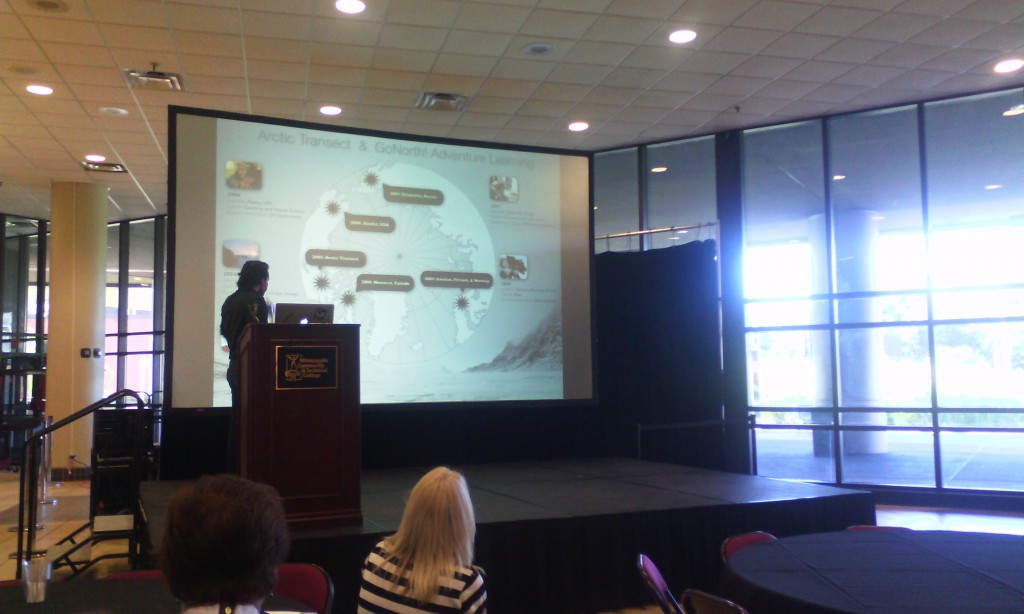
aaron doening
Engagement not completion
Design experience not product
Create change, not simply respond to it
He was a geography teacher : Dimitrina
Experience explore expand. Adventure based how to collaborate in ways we have not collaborated before pedagogical guidelines internet driven
Instructor – content – design
Today: first think is design, content, instructor. So how do we design learning environments is the most important one
Guide learners as designers. Constructivism. Design for meaning. Through the power of the story.
Geotetic design a learning environment learn geography using GIS
Situated movies (student-centered learning)
Grant Earthducation go to the most remote parts of the world to align their education with their culture, instead of what the government is downing as culture
Use of phone: whoever answers instructor’s question first, gets to pose the next question to the rest of the audience.
Design based research
Self-narrative, referencing the experience real world issues in real time
- reference knowledge . knowledge overlap. Technological pedagogical content knowledge.
Geotetic not only how prepare teachers, but desing learning environmwer of the story.
we explore: https://www.we-explore.com/
9.5 design as a learner.
the U Media Lab.
The Changing Earth. App GoX (instagram on steroids. tell their story through the app). How is this different from Google Earth
Raptor Lab (rehabilitate a raptor).
- design experiences
- build trust
- guide learners as designers
- recognize learners as experts
- encourage collaboration
- inspire self narrative
- reference the knowledge domains
- teach for change
- design as learner
adoering@umn.edi chasingseals.com @chasingseals
podcast pontification (audio version of blog self reflections)
Greg Steinke The U
A Digital Story Assignment using WeVideo

WeVideo is the Google response to iMovie cloud
The U is on Google email and thus google drive and all other google tools
The Center for Digital Storytelling. short videos, 3-5 min incorporate photographs with the author narration, reflection
Assignment (verbal directions). process (write a 2 page script, every page is about a minute of video), gather images that support the story; edit the script (rewrite); record audio to the script (use an app on the phone instead of WeVideo), WeVideo can edit the audio recording; edit the story, edit the photos to match the story; YourTube and/or Google+
working with faculty: is the digital story a good fit for your course? two questions: does the course have many writing assignments? does everyone have to do the same type of assignment? do you want to offer choices? do you want your students to share their work outside of the class? to you want to explore opportunities for students to develop 21 century skills?
google communities for sharing
wewideo has a tutorial at Center for Digital Storytelling
students can use the digital story for their eportfolio
the entire exercise is entirely based on mobile devices
time frame: scaffolding options
3d printing products were the tangible result of the project and the digital storytelling just the format to present
Google Drive master folder for the phone images and video; iOS apps: MoviePro, FiLMc Pro, VoiceRecord Pro (including mp3); Android: WeVideo
Storyboard template
Faculty Development Programs: Digital Storytelling Community of Practice
http://it.umn.edu/faculty-development-programs-digital-0
Poster sessions:
Brad Hokanson
http://dha.design.umn.edu/faculty/BHokanson.html
iPAD video kit:

Laurie Conzemius
Critical Thinking

ISTE: http://conference.iste.org/2016/
Joe Lau critical thinking
apps: Popplet blog.popplet.com http://www.popplet.com/ (mindmapping)
into the book: http://reading.ecb.org/
Kahoot – the token system. Polleverywhere https://blog.stcloudstate.edu/ims/2015/05/21/polls-and-surveys-tools-for-education/
Symbaloo https://www.symbaloo.com/home/mix/13eOcK1fiV zotero, easybib, delicious, diigo depending on the grade
youth voices; http://youthvoices.net/ replace social media like teachertube is trying to replace youtube
quandary games in education. https://www.quandarygame.org/ sim city
citizen science alliance http://www.citizensciencealliance.org/
Toontastic https://itunes.apple.com/us/app/toontastic/id404693282?mt=8 now free storytelling
coding and programming: https://www.makewonder.com/robots/dashanddot scratch
Osmo : https://www.playosmo.com/en/ $79.99 + give a set for free Stride principle as a parental involvement
chainlink;
kickword; https://play.google.com/store/apps/details?id=com.makario.wordkick
red herring (four categories) https://play.google.com/store/apps/details?id=com.BlueOxTech.RedHerring&hl=en
http://www.mathplayground.com/logicgames.html
http://www.mathplayground.com/thinkingblocks.html
evaluation:
telestory https://itunes.apple.com/us/app/telestory/id915378506?mt=8
explain everything http://explaineverything.com/
Exploring and Connecting 3D Printing to Teaching and Learning Jason Spartz, Saint Mary’s University of Minnesota
http://pubs.lib.umn.edu/minnesota-elearning-summit/2015/program/23/
http://pubs.lib.umn.edu/cgi/viewcontent.cgi?article=1023&context=minnesota-elearning-summit
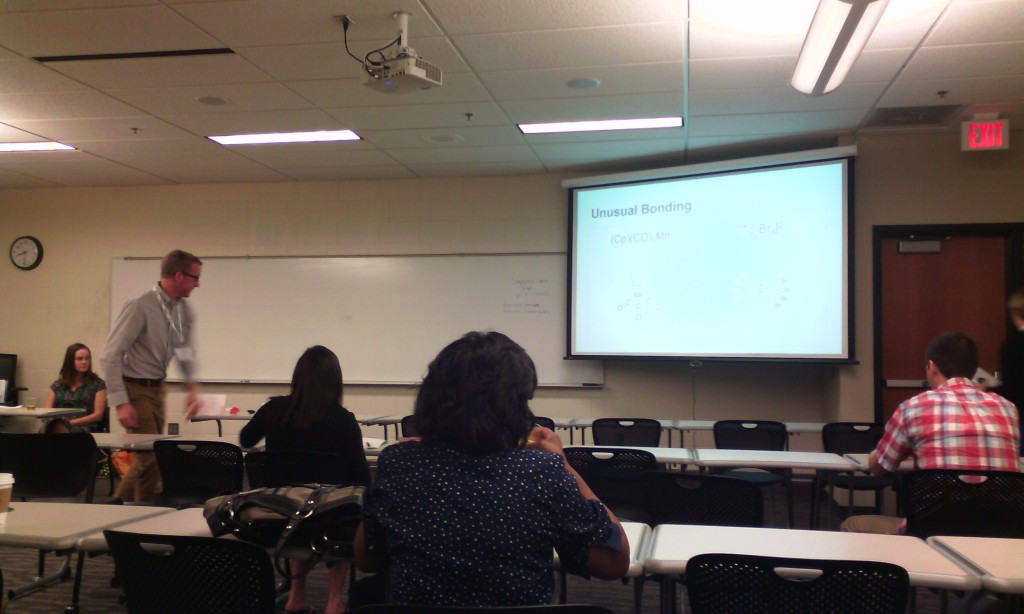
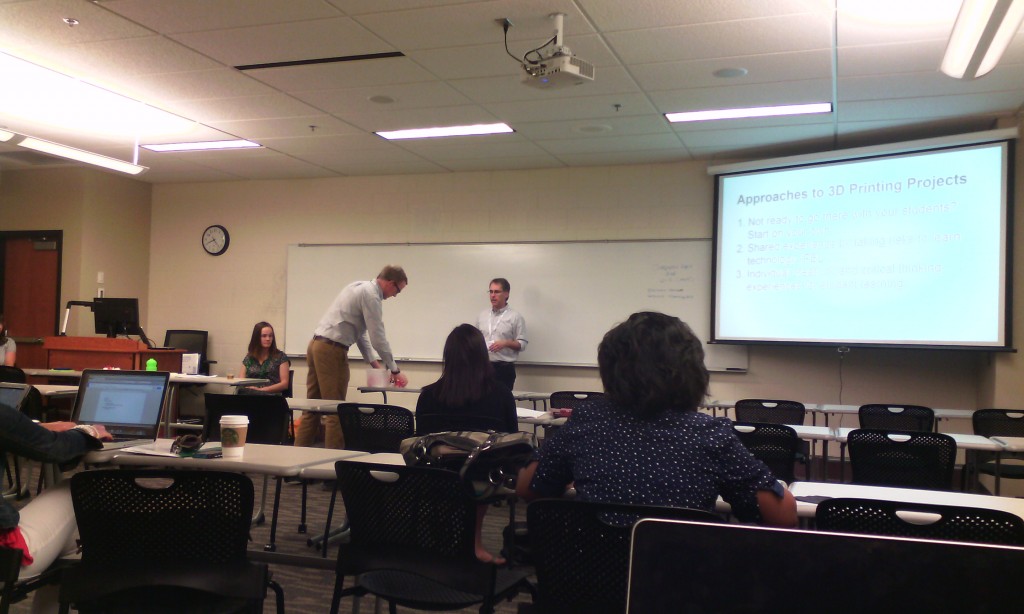
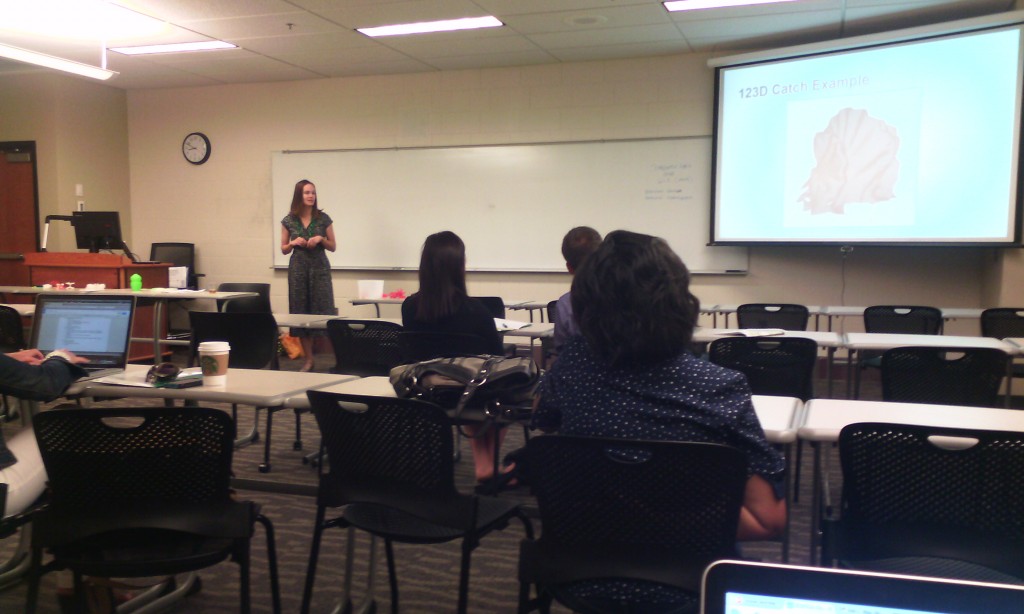
Jason Spartz, Saint Mary’s University of MinnesotaFollow
Lisa Truax, Saint Mary’s University of MinnesotaFollow
Karen Sorvaag, Saint Mary’s University of MinnesotaFollow
Brett Bodsgard, Saint Mary’s University of MinnesotaFollow
chemistry professor. 3D printing with different materials.
what else can be made (e.g. reaction vessel)
printing of atoms
crystalography dbase
Karen: pre-service teachers professor: how to use 3d printers and be comfortable with them. Steve Hoover. Thinkercad and Autodesk123D>
3D academy http://www.team3dacademy.com/index2.html. Pinterest board for3d Printing with resources
Lisa: graphic design. not intuitive. Rhinoceros (not free anymore). 123D strong learning curve. 3d printing will be incorporated in the curriculum. sculpture students and others don’t like fudging on the computer, but Adobe people love it. Some items takes up to 4 hours to print out. when working on the computer is difficult for some students to visualize the dimensionality.
collaborative learning opportunities.
no makerspace or fab lab. additional interest from the theater and business dept. 3d printing is connected to future work skills. new media ecology or media literacy set of skills.
the main presenter: build excitement and interest and gradually step back. how much material goes through and should we charge back. clean and maintenance involved; not too bad. better then a copier. plastic inexpensive. sizes with plastic – $25 and $50. how many project of a spool: depending on the size of the projects but considerable amount. two printers one art dept and one in the faculty dev area.
non profit visually impaired students. how 3d can make difference in special ed.
3d printing lab with access for everybody. ownership brings policy. where housed: neutral place.
only one printer is barely sufficient for faculty to figure out how to use it. purchasing two more if students and curricula to be involved.
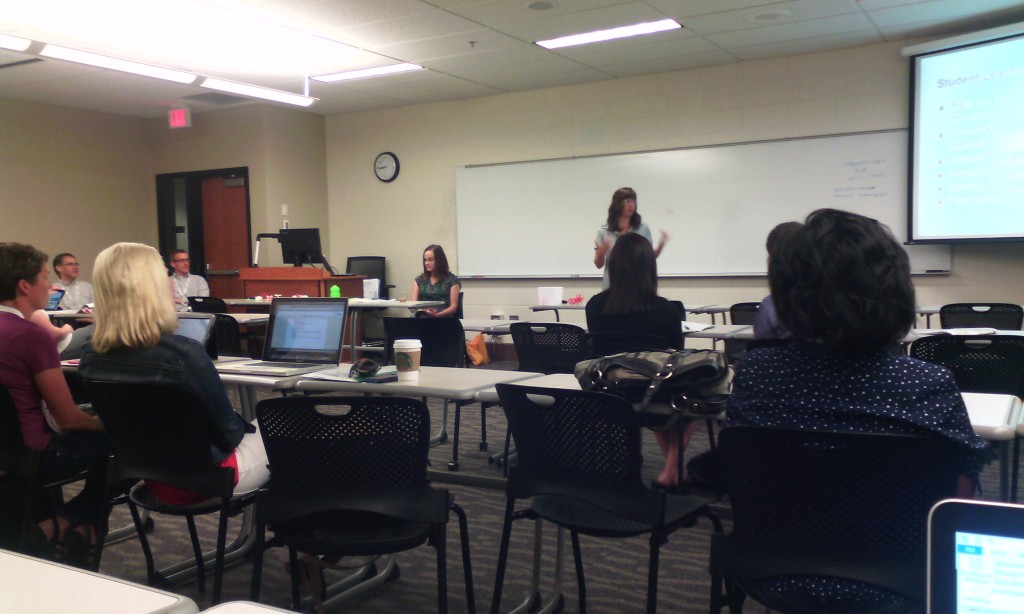



The Balancing Act: Team-Creating an eBook as an Alternative Method for Content Delivery Tom Nechodomu, University of Minnesota

Faculty Created digital stories – google “cultivaitng change series”
student created digital stories –
Susan Andre uses a slide titled “trust” to elucidate how the entire project was enabled. “trust” and “transparency” are sparse currency in the environment I work in. if she is right an ebook ain’t happening anytime soon at my place.
inclining habitat.
students involvement. use stipends. student artists. food for the video interviews. create a community, student centered.
people able to change the book.
copyright process; did you find it cumbersome. copyright permission center.
time span and amount of hours spent: 3-4 months per chapter.
Main speaker
David Wiley. Making Teaching and Learning Awesome with Open
MN Learning Commons
open educational resources
LUMEN
education – sharing feedback, encouragement with students passion about the discipline, yourself
open is not the same as free. free + permissions + copyright permission: 5 r = retain (make and own copies), reuse (use in a wide range of ways), revise (adapt, modify, and improve), remix (combine two or more), redistribute (share with others)
open:
free and unfettered access
perpetual, irrevocable copyright permissions
(look but don’t touch is not open)
tech enables OER permits
traditionally copyright materials on the Internet – not so good ; jet on the road
openly copyright materials on the internet _ yes: jet in the air
permission-less innovation. relatively inexpensive and broad permissions.
intellectual infrastructure of education: learning outcomes/objectives; assessments; textbooks. they are relatively expensive and narrow permissions.
disappearing ink strategies: buyback, rental, ebooks, online subscription
mad, glad, sad, rad: the grumpy cat. student success per dollar
opennetgroup.org/review
change in student learning: replace commercial with open books – small. realign, bigger change. rethink is the large change.
responsibilities:
attribution and meeting other license requirements
thin common cartridge: a way to bring the content to the CMS, but the content remains on the creative commons
disposable assignment: students hate doing them, instructors hate grading them. waste of time and energy
so what?
open education infrastructure: open outcomes, objectives, activities, educational resources
the culture of glued legos must be eradicated. open pedagogy. open credentialing model
summary: don’t settle for “affordable.” improve student outcomes. improve affordability. improve design / academic freedom
links generated from the discussion at my presentation:
Enabling Bring Your Own Device
white paper by the Cisco
To help improve understanding of BYOD and its impacts on modern network environments, this white paper will further explore the many differences that exist between corporate and educational approaches to the technology.
In the education space, dealing with non-standard, user-managed devices has been and still remains the norm. Unfortunately, the variety of devices means a multitude of operating systems and software are encountered, with many “standards” being defined. As a result there is little consistency in the device type or the software being installed. Since the device is owned by the student and is a personal resource, it is often difficult or impossible to enforce a policy that prevents users from installing software. In addition, due to the nature of learning as opposed to a corporate environment, it is also difficult to put a restriction on certain classes of software since all may provide a worthwhile educational purpose.
providing a solution that unifies management and deployment polices across both wired and wireless devices is very desirable.
The Internet of Everything (IoE) has spurred a revolution in mobility. Collaboration anywhere, anytime and with any device is quickly becoming the rule instead of the exception. As a result it is now common for students to bring mobile devices such as smartphones, tablets and e-readers into the academic environment to support their educational endeavors.
The infrastructure supporting BYOD no longer has the sole purpose of providing a wireless radio signal within a given area. The focus is now about providing the appropriate bandwidth and quality to accommodate the ever-growing number of devices and ensure that an application provides a good end-user experience. In a sense, applications are now the major driving force behind the continuing evolution of BYOD. For example, a teacher accessing video in the classroom for educational purposes during class hours should have greater priority than a student in the same area accessing a gaming site for recreation.
A state-of-the-art BYOD infrastructure should now be capable of providing more than just generic, general-purpose wireless connectivity. In the classroom environment, the notion of “differentiated access” often resonates with faculty and staff. Once this has been determined, a policy can be applied to the user and their activity on the network.
Granular security can also be intelligently delivered.
Quality of Service (QoS) rate limiting has been available for some time, but now there are newer QoS techniques available.
Location-based services can provide their first interaction with the university. By delivering campus maps and directional information, location-enabled services can enhance the experience of these visitors and provide a positive image to them as well. As a visitor enters a particular building location, information could automatically be provided. In the case of a visiting student, information about the history of a building, departments contained within the building, or other resources could be presented to enhance a guided tour, or provide the perspective student the ability to have a self-directed tour of the campus facilities.
802.11ac Technology (https://en.wikipedia.org/wiki/IEEE_802.11ac)
Software Defined Networking (https://en.wikipedia.org/wiki/Software-defined_networking)
Voice over presentation
Faculty request to lay voice over a presentation with pictures. Solutions:
Windows / PC

ppt voice over
Apple/Mac

voice over PPT on Apple
advantages:
– unfortunately, faculty are way too familiar with PPT. Familiar to the point that they don’t want to try something better.
– FERPA complient
disadvantages:
– too old. PPT is pre-Internet. It does not matter how much Microsoft is trying to adapt it, the concept is old. There is a myriad of cloud-based solutions, which do better job: https://blog.stcloudstate.edu/ims/2013/09/30/the-5-best-free-slideshow-presentation-and-creation-tools-for-teachers/
– too many files, too many variations
– PPT posted in D2L displays in the D2L Viewer. The visuals are there, but the voice is not. In order to hear the voice, students must download the presentation. Faculty must reflect this in the syllabus.
– faculty need to know how to upload on their web space and figure out URL, if PPT is not place in LMS (D2L)- if faculty places PPT in LMS (D2L), then it is behind password; nearly impossible to share (can share only with SCSU and/or MnSCU members.
– faculty must remember to indicate in the syllabus and/or D2L / Content that “in order to hear the voice over, user must download presentation.”

slideshare
advantages:
– it is a “social” app, like LinkedIn and Twitter. Tagged correctly, the presentation is a platform for “same-minded” people to discuss mutual interests.
– excellent for sharing: conferences, MOOCs etc.
– it has discussion group in LinkedIn.
disadvantages:
– voice over presentation: way to cumbersome compared to PPT. Watch their presentation
– by FERPA regulations, if the presentation contains personal data about students, it cannot be shared on SlideShare
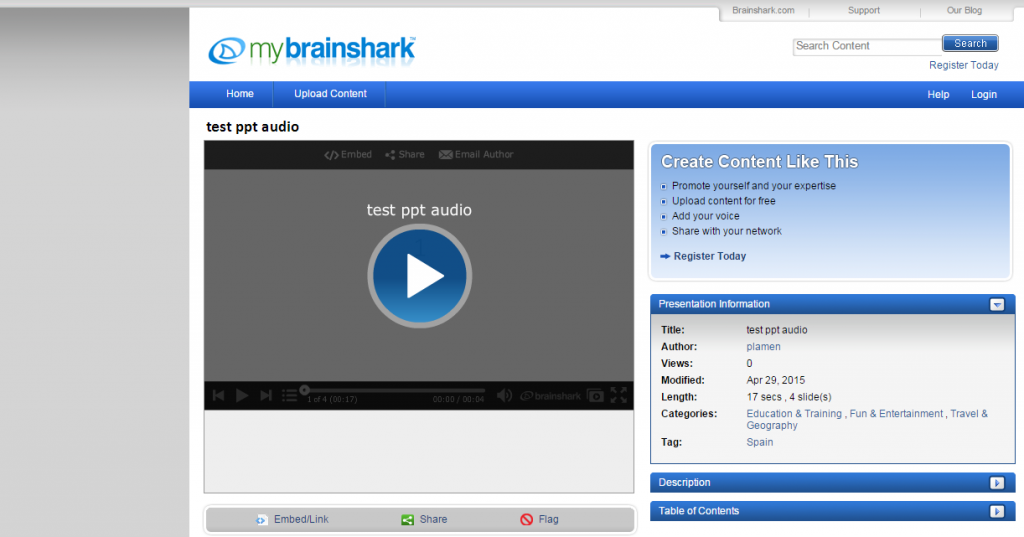
mybrainshaark
advantages:
– it is a “social” app, like LinkedIn and Twitter. Tagged correctly, the presentation is a platform for “same-minded” people to discuss mutual interests.
– excellent for sharing: conferences, MOOCs etc.
– like PPT, very easy upload of pix and voice over. Better the PPT, since it is online and easy to distribute.
– easy to upload PPT and easy to voice over each slide
disadvantages:
– does not embed in D2L (it is D2L issue, not the app), but works perfectly as a link
– faculty must remember to indicate in the syllabus and/or D2L / Content that when clicking on the URL to the PPT, user must simultaneously press “Ctrl” key to open PPT in a separate browser window or tab
– by FERPA regulations, if the presentation contains personal data about students, it cannot be shared on SlideShare

voicethread
advantages:
– consistently voted through last 5 years by K12 educators as great interactive tool.
– video, images, audio and text.
– “constructivist” premiss: teacher and students can exchange asynchronously ideas by using images, video, text and audio.
disadvantages:
– free option has limited features.
– by FERPA regulations, if the presentation contains personal data about students, it cannot be shared on on this site.

mediasite
advantages:
– crude screen capture: faculty can run the PPT manually and narrate over it.
– dirty but fast
– easily shared online (URL ready)
– FERPA compliant
disadvantages:
– students cannot comment (compared to VoiceThread)

- lodestar
advantages:
– free: http://lodestarlearning.com/downloads/lodeStar7.2/en/LodeStar-7.0.exe
– easy to use
– FERPA compliant; endorsed by MnSCU
disadvantages:
– voice over too complex (very much the same as with SlideShare)
advantages:
– FERPA compliant; endorsed by MnSCU
disadvantages:
–
I have not included TechSmit’s Jing https://www.techsmith.com/jing.html, because their video output (Flash file) is obsolete and impossible to convert for free. While it still can be played, shall faculty want to upload the video file on Youtube or similar social media, it will be impossible.
———————————-
Related IMS blog entries:
https://blog.stcloudstate.edu/ims/2014/06/01/social-media-and-presentations-free-image-sources/
https://blog.stcloudstate.edu/ims/2013/09/30/the-5-best-free-slideshow-presentation-and-creation-tools-for-teachers/



















